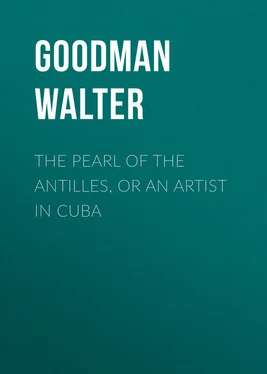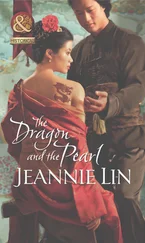Walter Goodman - The Pearl of the Antilles, or An Artist in Cuba
Здесь есть возможность читать онлайн «Walter Goodman - The Pearl of the Antilles, or An Artist in Cuba» — ознакомительный отрывок электронной книги совершенно бесплатно, а после прочтения отрывка купить полную версию. В некоторых случаях можно слушать аудио, скачать через торрент в формате fb2 и присутствует краткое содержание. Жанр: foreign_antique, foreign_prose, Путешествия и география, на английском языке. Описание произведения, (предисловие) а так же отзывы посетителей доступны на портале библиотеки ЛибКат.
- Название:The Pearl of the Antilles, or An Artist in Cuba
- Автор:
- Жанр:
- Год:неизвестен
- ISBN:нет данных
- Рейтинг книги:4 / 5. Голосов: 1
-
Избранное:Добавить в избранное
- Отзывы:
-
Ваша оценка:
- 80
- 1
- 2
- 3
- 4
- 5
The Pearl of the Antilles, or An Artist in Cuba: краткое содержание, описание и аннотация
Предлагаем к чтению аннотацию, описание, краткое содержание или предисловие (зависит от того, что написал сам автор книги «The Pearl of the Antilles, or An Artist in Cuba»). Если вы не нашли необходимую информацию о книге — напишите в комментариях, мы постараемся отыскать её.
The Pearl of the Antilles, or An Artist in Cuba — читать онлайн ознакомительный отрывок
Ниже представлен текст книги, разбитый по страницам. Система сохранения места последней прочитанной страницы, позволяет с удобством читать онлайн бесплатно книгу «The Pearl of the Antilles, or An Artist in Cuba», без необходимости каждый раз заново искать на чём Вы остановились. Поставьте закладку, и сможете в любой момент перейти на страницу, на которой закончили чтение.
Интервал:
Закладка:
'He who, like ourselves, has frequently traversed the Calle de Santa Rosa, must have observed that in that street stands a priceless casket, which being open leads to the studio of the two distinguished followers of the divine art of Apelles to whom we have referred.'
After continuing to indulge in this poetical strain for another paragraph or two, the enthusiastic writer is recalled to his duties of art-showman, and proceeds to describe in glowing colours all that is contained in the 'priceless casket,' open for his inspection. He lingers lovingly over a large copy of Titian's 'Venus' which, together with other pictures and unfinished sketches, we had brought with us from Italy. He is perfectly enraptured with the charms of the painted goddess, from whom he can scarcely tear himself away even on paper, and he concludes with the remark that, 'after contemplating this life-like representation of nature, the spectator is disposed to touch the canvas to convince himself that what he beholds is merely a painted shadow of the reality!'
Sketches and portraits next occupy his attention; 'and if,' he adds, 'the visitor's curiosity is not satisfied with the representations of men and women, he can relieve his vision by regarding beasts and birds, which, although only depicted upon canvas, appear to be endowed with animation!'
In spite, however, of these and other published tributes to our genius, we find that high art, at least, does not pay in our part of the tropics. Regardless of posterity, therefore, we abandon the sublime, and offer our art services for anything that may present itself. A bonâ fide painter is a rarity in the town I am describing, so Nicasio and I are comparatively alone in the fine art field. Our patrons are numerous, but we are expected by them to be as versatile as the 'general utility' of theatrical life.
Nicasio finds a lucrative post vacant at the public 'Academy of Arts' – an institution supported by the municipality of the town. There is a great dearth of 'professors of drawing,' owing to the sudden resignation of a gentleman who previous to our arrival had been the sole representative of 'the divine art of Apelles.' The academy is a dreary apology for a school of art. The accommodation is scanty, and the 'models' provided for the scholars or 'discipulos,' as they are grandly styled, consist wholly of bad lithographic drawings. The post of professor, however, yields a fair monthly stipend, and it being offered to and accepted by my companion, contributes no inconsiderable item towards our united income.
We are overwhelmed with portrait work, but most of it is connected with defunct people, for we cannot induce our patrons to believe that a living person is a fit subject for our brush. And so it often happens that we are summoned from our homes, doctor-like, at all hours of the night, to hasten to the house of a moribund, for the purpose of making such notes as shall afterwards serve as guides for a replica of the late lamented in his habit as he lived.
One of our first applicants for this kind of patronage is Don Magin, the merchant, whose acquaintance we have made at Don Benigno's tertulia. The Don stops me in the street one day, and with a disturbed countenance tells me that his only child – a girl of three – has been lately buried. Will I, or my partner, be so good as to restore her to life on canvas? I agree to undertake the work if Don Magin will provide me with a guide in the shape of a photograph.
'I am sorry to inform you,' says the Don, 'that my poor child never sat for her photograph.'
'Then,' I remark, 'I will be satisfied with a slight but faithful sketch, or even a coloured miniature.'
'I regret that I cannot supply you with any representation of my departed daughter,' replies Don Magin.
'How then can you expect to possess a portrait of her?' I enquire.
'Easily enough,' he answers. 'It is true that I have no actual likeness of the child; but equally good guides are at your disposal. I can provide you with the little dress, the little hat, the little shoes and socks which she was accustomed to wear. I have also taken the measure of her height, and the size round her pretty waist. I can furnish you with minute particulars respecting the colour of her complexion, hair and eyes, and I will show you a lovely child who resembles my own in many ways. Besides this, my Engracia was considered to bear a strong likeness to her father. Make her appear so also in the painting; introduce the accessories which I have mentioned; take a notion or two from the girl that I will send, and I am convinced that the result will be satisfactory to both of us.'
In vain do I endeavour to show the impossibility of such an achievement; the merchant will not hear of refusal, and as an inducement for me to make only a trial, he offers me a large price, promising to double the amount if I succeed to his liking.
It is a source of infinite consolation to the distressed old gentleman – who by the way is very grey and wrinkled – when I finally agree to make a trial; but I warn him that his anticipations about the result will never be realised.
Sanguine and happy, my strange patron departs, and in due course I receive the various articles he had specified. The pretty child serves well enough as a model for the proportions of the figure, and attired in the garb of her late lamented playmate, she enables me to devote every attention to the detail. I am also able to crown the little pink dress with an infantile face, whose hair, eyes, and complexion I colour according to instructions; and with the introduction of a landscape background and with a stray flower or two arranged in the foreground, the sum total is a pretty picture which, on that account, leaves at least a 'balance in my favour!'
The portrait (?) having been placed in its gilded frame, my patron is invited to inspect it.
For many long moments Don Magin contemplates the work without uttering a word. His countenance, which I watch with an anxious eye – as yet expresses neither approval nor the reverse.
Does this portrait on my easel remind the bereaved parent of his lost offspring?
It does! yes; there faithfully depicted are the very dress, the very little hat, and the still smaller shoes which she was wont to wear in life! The figure, complexion, colour of eyes and hair, are all hers to a shade. In short, a resemblance to his child gradually developes itself before the old gentleman's vision, till at last clasping both my hands, and with tears in his eyes, he declares that I have succeeded far beyond his best expectations.
In this instance everything terminates like the last scene in the drama, where the aged father recognises his long lost child. But work of this nature does not always end so satisfactorily.
Happily, portraiture is not our only resource. We hold important professorships in colleges, schools, and ladies' academies, where we impart every accomplishment in which drawing-paper and pencils are used, including the art of caligraphy, missal-painting, and designing for fancy needlework.
Whenever a strolling company of Spanish players encamp for the season at the theatre, our services are required as the company's special scenic artists. The demand for scenery at the Teatro Real Cuba is, however, small; a divergence from its standard repertoire being considered as next to an infringement on public rights; so our labours rarely extend beyond an occasional property, or 'set' in the shape of a painted 'ancestor,' a practicable piece of furniture, or a bit of bank for introduction into the elegant saloon, the cottage interior, or the wood scene. Once only are our scenic services in special request for a fairy piece, which the manager has announced with 'entirely new decorations.' Though the public believe that four months have been employed in the preparations, we have barely as many days for the purpose, and during this short space we produce that gorgeous temple which is destined to form a conspicuous feature in the well-worn wood scene, and we add to the native charm of the elegant saloon and the cottage interior with suitable embellishments. Dutch metal and coloured foils, lavishly administered, cover a multitude of imperfections, and we have still the red fire and an indulgent public to fall back upon. Our efforts are rewarded by thunders of applause on the part of the audience, and eulogistic paragraphs in the local papers.
Читать дальшеИнтервал:
Закладка:
Похожие книги на «The Pearl of the Antilles, or An Artist in Cuba»
Представляем Вашему вниманию похожие книги на «The Pearl of the Antilles, or An Artist in Cuba» списком для выбора. Мы отобрали схожую по названию и смыслу литературу в надежде предоставить читателям больше вариантов отыскать новые, интересные, ещё непрочитанные произведения.
Обсуждение, отзывы о книге «The Pearl of the Antilles, or An Artist in Cuba» и просто собственные мнения читателей. Оставьте ваши комментарии, напишите, что Вы думаете о произведении, его смысле или главных героях. Укажите что конкретно понравилось, а что нет, и почему Вы так считаете.












